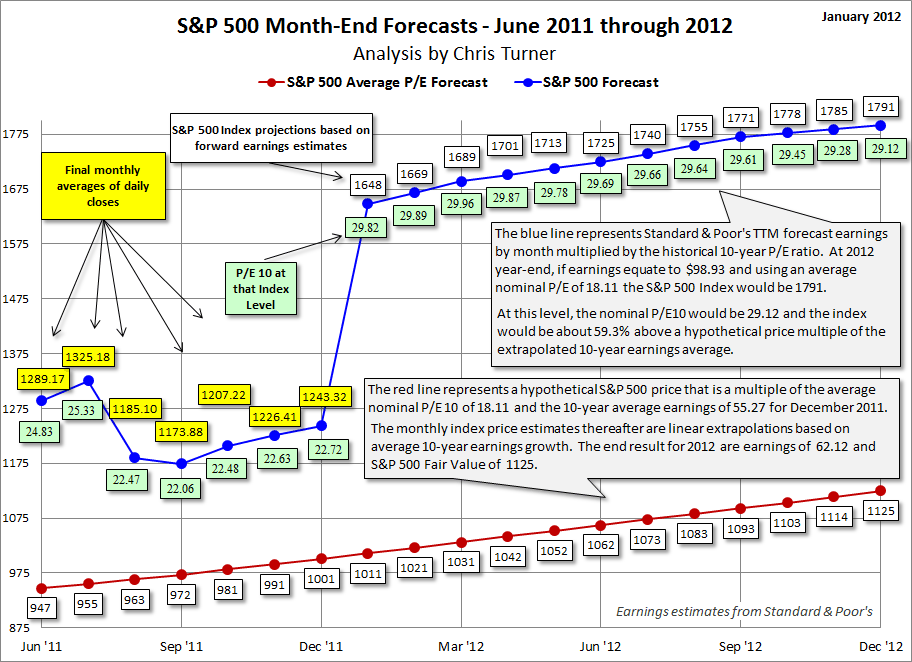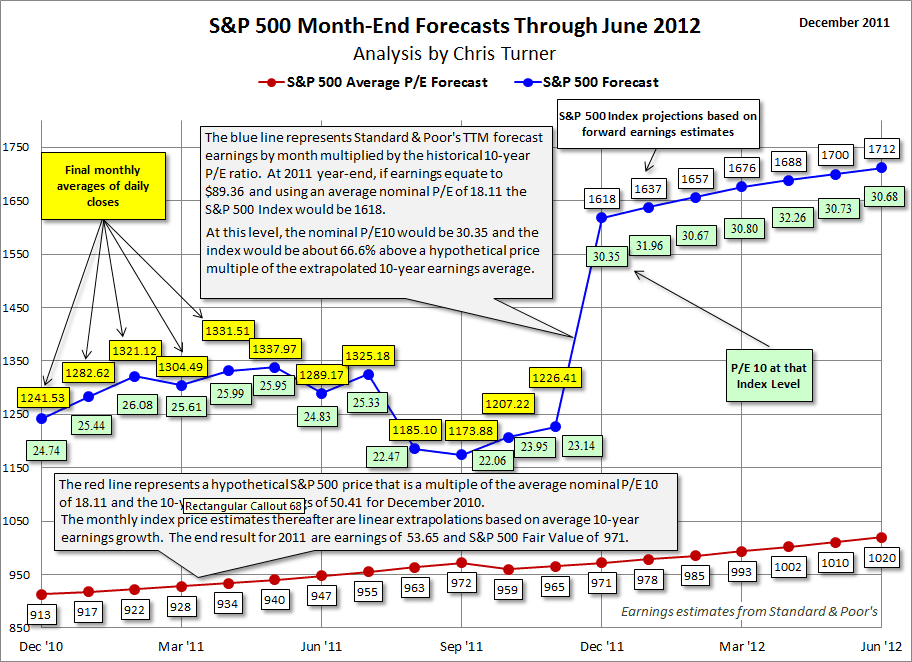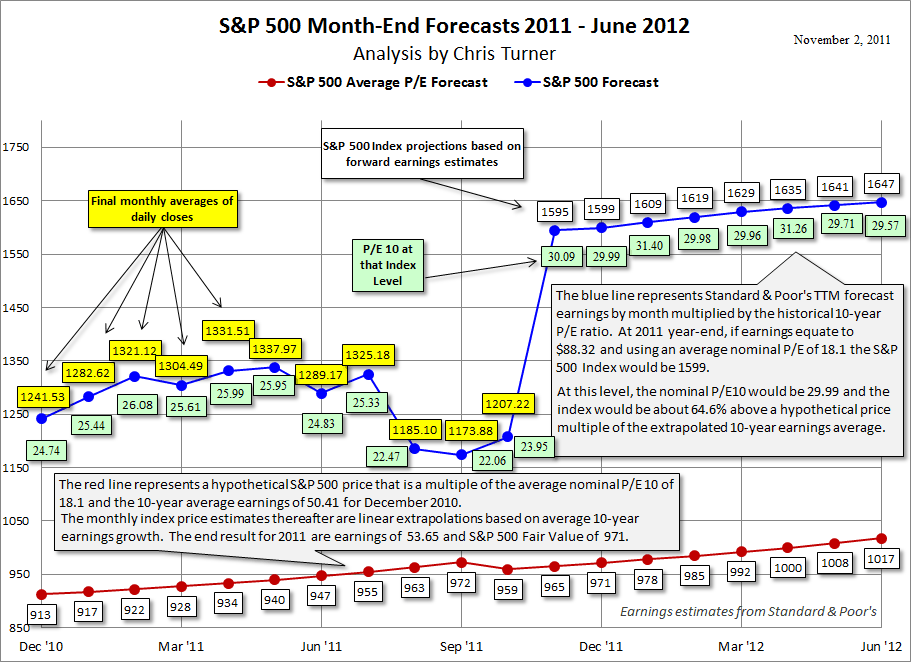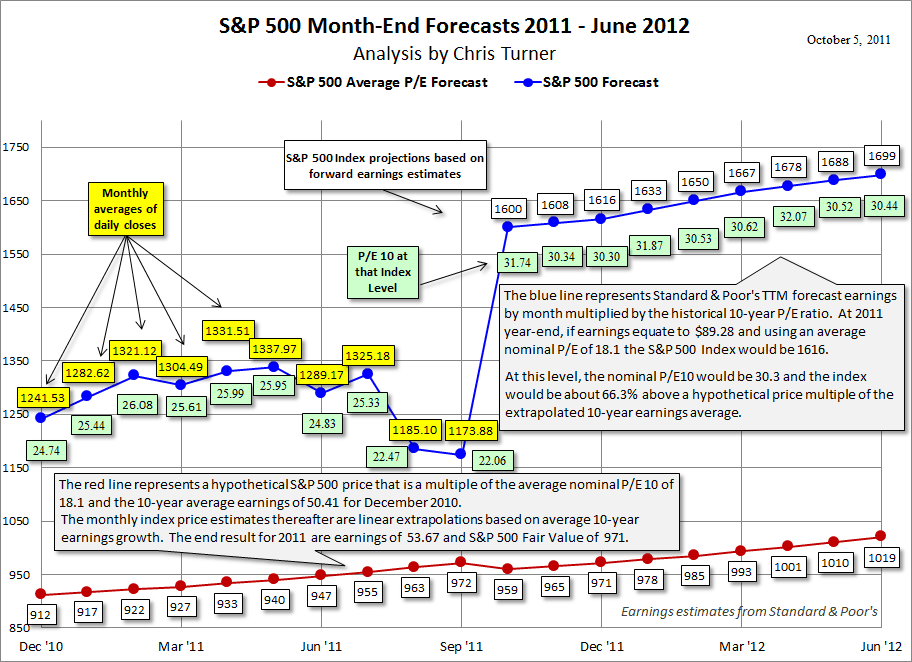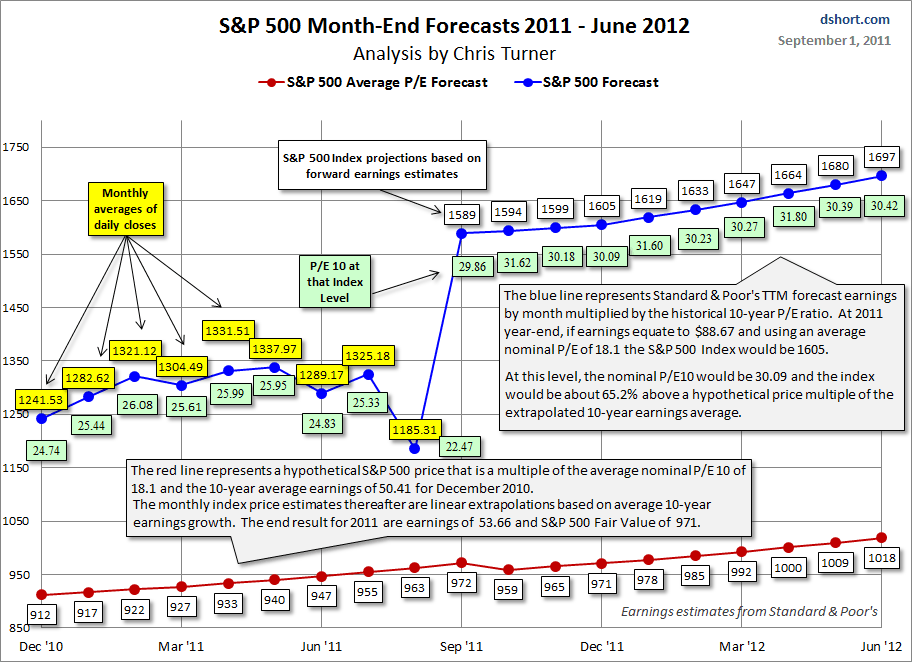At the beginning of February with 70.2% of Q4 earnings reported, here is the latest update of my ongoing "thought experiment" for forecasting the S&P 500 price based on earnings fundamentals.
The chart below is based on the latest trailing twelve-month earnings (TTM) data published on the Standard & Poor's website as of February 2. The numbers are from the spreadsheet maintained by senior analyst Howard Silverblatt. See dshort's monthly valuation update for instructions on downloading the spreadsheet.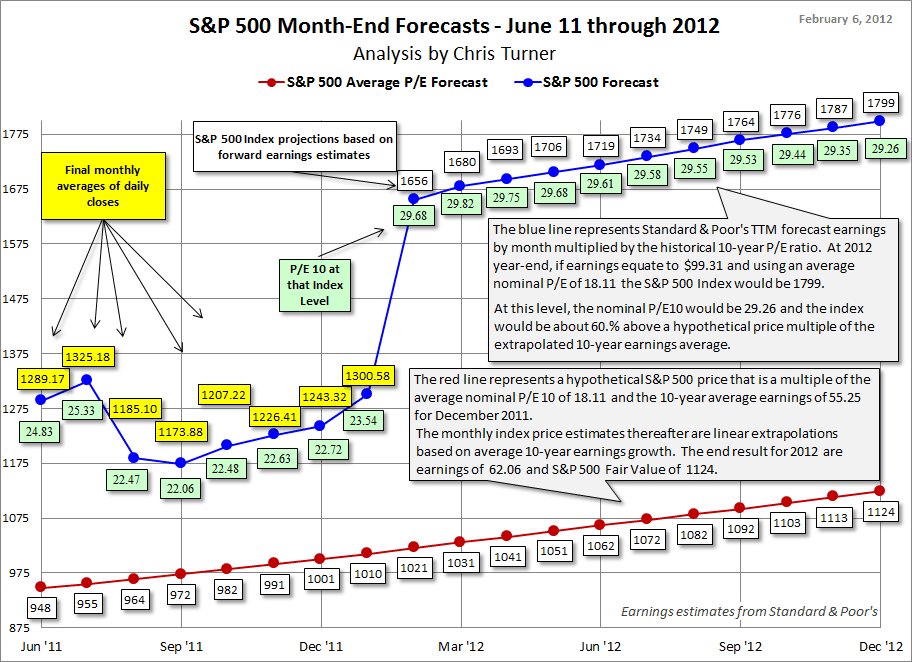
Here are the key assumptions in the calculations:
- The 10-year average of nominal TTM earnings is 55.25 at the end of 2011, rising to 62.06 by the end of the year.
- The average nominal cyclical P/E10 is currently 18.11.
- The S&P 500 historic prices used in the calculations are monthly averages of daily closes.
- Standard & Poor's estimates of TTM earnings for Q1 2012 through Q4 2012 are
$92.78, $94.91, $97.40, and $99.31 (as of the latest spreadsheet). - The months between the quarterly earnings estimates are linear interpolations.
The blue line represents Standard & Poor's TTM forecast earnings by month multiplied by the historical nominal 10-year P/E ratio. At 2012 year-end earnings of 99.31 and an average nominal P/E of 18.11, we would see the S&P 500 at 1799. At this level, the nominal P/E10 would be 29.26, and the index would be about 60% above a hypothetical price multiple of the extrapolated 10-year earnings average.
The red line represents a hypothetical S&P 500 price that is a multiple of the average nominal P/E10 of 18.11 and the 10-year average earnings of 55.25 for December 2011. The monthly index price estimates thereafter are linear extrapolations based on average 10-year earnings growth.
The optimistic view (blue line) would put us around 1656 in the S&P 500 by the end of February, the assumptions being that the Standard & Poor's earnings forecasts are correct the nominal P/E10 ratio is the multiple we see.
The pessimistic view (red line) is a reversion to the historic earnings and nominal P/E10 multiple.
But history shows us that, regardless of your preferred earnings divisor (nominal or real, TTM or 10-year average TTM), the P/E ratio has never hovered around the average. The market swings above and below its long-term average valuation in erratic arcs that can last for many years. For a long-term perspective on valuation extremes, see Four Market Valuation Indicators and the compelling research of Ed Easterling on the history of earnings per share.
Check back next month for a new progress report.